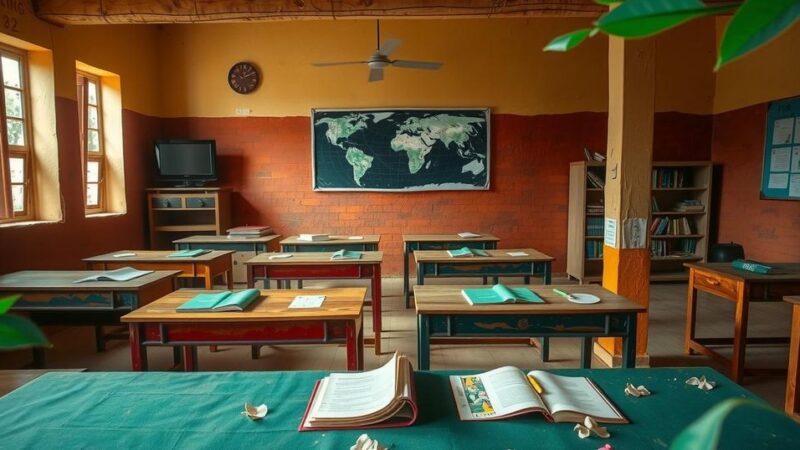A UNICEF report reveals that 51 million children in eastern and southern Africa are at risk from extreme weather patterns, severe food poverty, and inadequate health support. Countries like Malawi, Zambia, and Zimbabwe face crises from drought and flooding, with 9 million in Malawi alone needing urgent help. Immediate collective action is crucial to creating a safer future for vulnerable youth.
A recent report from the United Nations Children’s Fund reveals that 51 million children in eastern and southern Africa are at significant risk due to extreme and unpredictable weather patterns. This alarming situation is compounded by factors such as inequity, conflict, and climate-induced poverty, with approximately 64 million children under the age of five in Africa facing severe food poverty. Such hardships place these children in a precarious position regarding their nutrition and overall health.
The report highlights the serious health threats these children face, including malnutrition resulting in wasting, unsafe water access, poor sanitation, and inadequate educational opportunities. Climate-related issues such as El Nino and La Nina, alongside intensified drought conditions, are exacerbating these challenges and leading to urgent crises in countries like Lesotho, Malawi, Namibia, Zambia, Zimbabwe, and Botswana, all of which have declared states of emergency.
Malawi stands out with nearly 9 million individuals, including almost 5 million children, needing urgent assistance due to erratic weather that has destroyed crops across most districts. Zambia is also grappling with severe food shortages as drought pivoted to floods push over 6.5 million people, encompassing 3 million children, to a crisis point with extensive food insecurity.
Zimbabwe’s prolonged drought continues to strain food and water supplies, increasing the likelihood of violence and disease outbreaks, particularly cholera and polio. The UNICEF report stresses that immediate collective action from multiple organizations, sectors, and individuals is vital to alleviate this crisis and support vulnerable children across the region.
To address these urgent needs, UNICEF is integrating climate-smart programming that aims to fortify communities’ resilience against climate-induced shocks. These efforts include engaging directly with communities to empower children and adolescents while adapting to climate fluctuations caused by El Nino and La Nina. Moreover, UNICEF is committed to sustainability through the adoption of greener energy options, embodying a pivotal aspect of its approach to providing hope and protection for at-risk youth.
The ongoing climate crisis presents a dire threat, particularly for children in Africa, where extreme weather patterns and conditions destabilize the quality of life. With substantial numbers of children facing severe food poverty and malnutrition, the United Nations Children’s Fund provides insights into the deep-seated issues caused by climate change, conflict, and inequity. This report underscores a pressing call to action required to safeguard the futures of millions affected by these intersecting crises.
In conclusion, the findings of UNICEF emphasize an urgent need for coordinated action to address the worsening climate crisis impacting millions of children in eastern and southern Africa. As environmental instability intensifies, vulnerable populations face increasing deprivation and health risks. A collective response involving multiple stakeholders is essential to protect these children, strengthen community resilience, and mitigate the impacts of climate change going forward.
Original Source: www.chinadaily.com.cn






